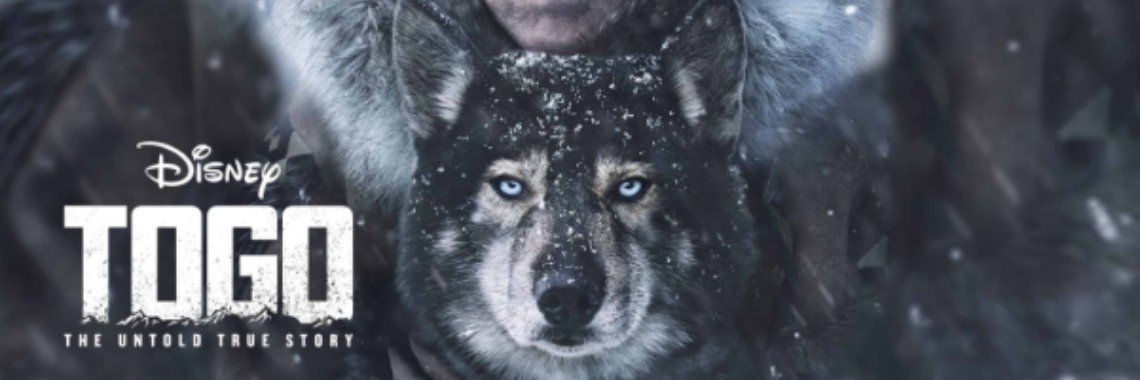The true story of the sled dog that starred in the 1925 Serum Race has conquered children and adults. I will tell you who Togo was and why Balto, another protagonist, stole his glory.
Togo is a Disney film based on the true story of a dog of the same name whose heroic performance saved many lives in 1925.
Willem Dafoe masterfully plays Leonhard Seppala, the dog breeder, and musher who traveled aboard the sled led by Togo and who ran the longest and most dangerous section of the so-called Race of the Serum, a journey of 1,085 kilometers in five and a half days. based on relays, from the city of Nenana to Nome to bring vaccines against a diphtheria epidemic that was devastating the population.
The film perfectly recreates the leader spirit of this undersized, skinny animal originally trusted only by its owner, Constance Seppala, played in the film by Julianne Nicholson (Boardwalk Empire, Masters of Sex, Law, and Order). From his first pranks as a puppy to the despair of his owner, who tried to get rid of him on several occasions trying to give him up for adoption to different families, to discovering that he had the power of a leader and placing him in the first position of the sled, a position that he would not leave until the end of its active life.
Balto Took Away The Glory
Togo (pictured with his actual owner) was the true hero of the Nome Serum Race as he covered a total of 563 kilometers taking a shortcut across the ice of Norton Sound. At that time, he was 12 years old and his own owners feared that the effort would cost him his life, but the animal fulfilled its mission perfectly, saving the life of its owner on a stretch of floating ice.
While the other mushers gave each other relays of about 50 kilometers, Seppala, with Togo in the lead, made the greatest effort and left the whey 126 km from its final destination. But, despite the achievement, the glory went to Balto, the inspiration for another Disney classic, and his owner Gunnar Kaasen, who made the final stretch of 88 kilometers and entered Nome victorious in the early hours of February 3. The feat earned him popular acclaim and a commemorative bronze statue in Central Park, New York.
Now, the Disney movie, without detracting from Balto, tries to give due value to this canine hero who died in 1929 at the age of sixteen and whose dissected body is on display at the Iditarod Trail Sled Dog Race museum in Wasilla, Alaska. His owner, Seppala, who introduced the husky breed to the Anglo-Saxon world, continued to participate in bobsled racing and won a silver medal at the 1932 Winter Olympics in Lake Placid, USA. He died in 1967, at age 89, in Seattle.
The Unforgivable Oblivion of Togo
Going for the medicine was simple, the problem came when they had to come back, since, in addition to more adverse weather conditions, the antitoxin could not be exposed to the cold for more than 6 days, so after a very tough race, in which many of the dogs and owners died along the way, a large part of the team managed to return to Nome in just five and a half days, with which the sick people (mostly children) were cured to prevent a major epidemic.
As I mentioned earlier, there is a statue of Balto in Central Park, New York, and in general, his name has always come to the fore when talking about Nome's career. However, the new Disney + movie tries to correct what is in its hands, collecting the data and doing justice. 'Togo' isn't trying to take anything away from Balto, but as it explains before the end credits, he was the dog that ran the longest, especially in the lead position, which is the most difficult.
On the other hand, the point that connects 'Togo' with the great classic adventure cinema, the one that is never seen anymore, is that it renounces a linear narration in which the adventure goes further, but instead creates fragments of the life of the dog and the relationship with its master to establish a sober, bittersweet and tender climax, in keeping with the dog's silent deed and the animal's innocent humility, a nobility that reconnects with nature and restores the animal's honor with elegance.
Now, at Seward Park, New York, we can see Togos' statue as well.
It is a film that I recommend, I have seen it twice and it always moves me. On the other hand, my wish is that no more dogs be used for these things.

















Comment with a minimum of 10 words.
I would like to point out that it is forbidden to publish photos that are not free of copyright. You can only publish your own photos or photos that are royalty-free.